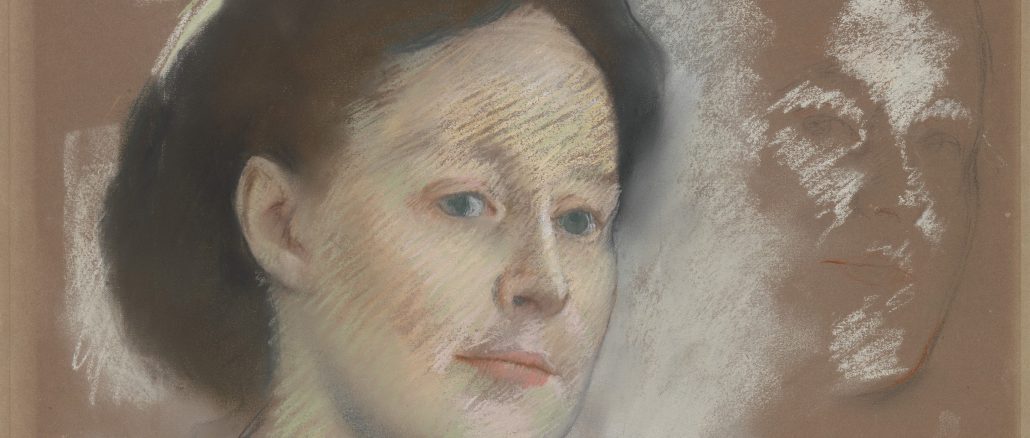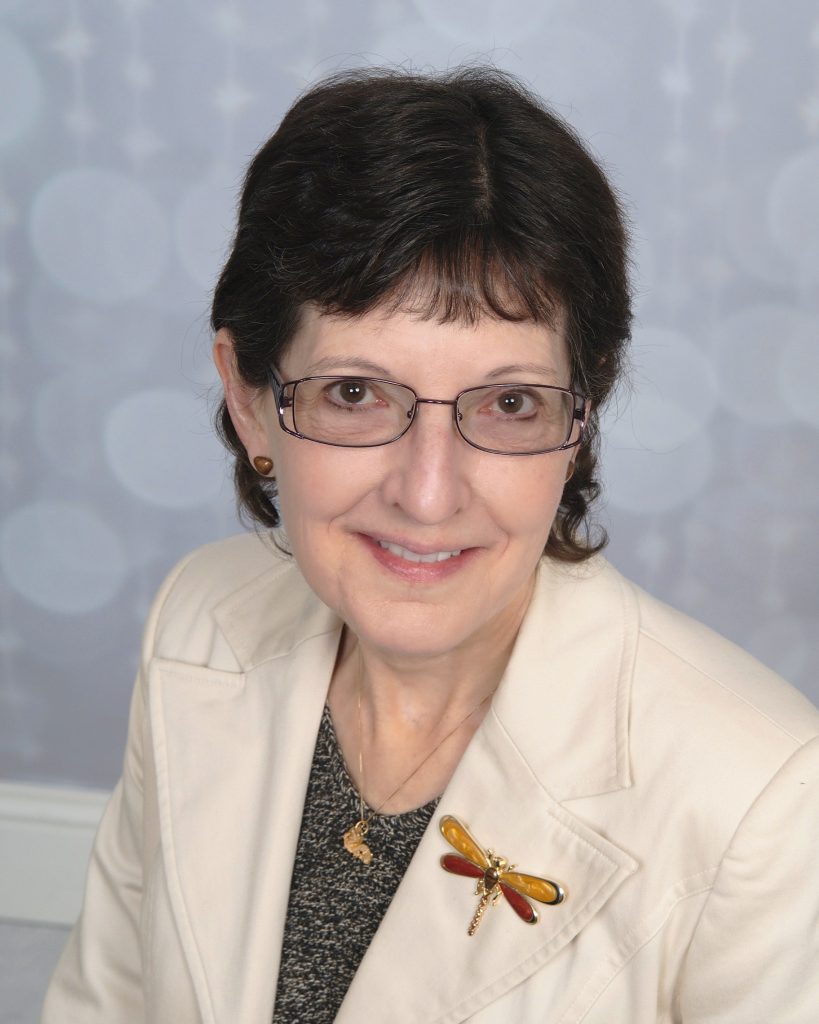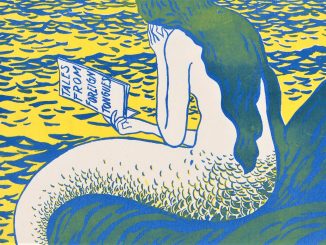
This piece narrates my journey as an older woman who attempts to resolve the financial, lifestyle, and professional realities of choosing to start an online freelance business. This is a deeply personal narrative that questions traditional expectations of work in contemporary society and examines current trends in the rapidly changing labor market.
A few years ago, I fled a full-time job with long hours, great benefits, an interminable commute, decent pay, and a chaotic environment. At work, I no longer remembered who I was or why I was there. I was in my late fifties and healthy, although physically and emotionally exhausted. I planned to rest a few weeks and then, using a small nest egg I had set aside, pivot a new direction for income and retirement savings. I had run the numbers, read dire warnings about Social Security and Medicare, and calculated I needed to work another fifteen years.
But once I had left an all-consuming career, I started to wonder whether I really wanted to live that way. It’s what many do to earn a living, and society expects it. Until then I had never questioned it.
My stress level plummeted as I no longer fought the daily madness of rush-hour traffic (especially in snow and ice). Our elderly dog grew sicker and slipped into her last days, and I was grateful to be with her. I enjoyed lunches and coffee with my husband, several years older than I and fully retired on a small teacher’s pension. When he needed various medical procedures, we both appreciated my availability for caregiving. And after my mother died, I seized time to furiously write my way through a lifetime of emotions.
I finally decided to continue on my new path of freedom and pursue the fabled freelance life. And with every step following that choice, I’ve second-guessed myself.
* * *
Since childhood, I’ve been trying to forge a unique vocational purpose that fits my values and deepest sense of self, that matters to me and also makes a meaningful difference for others. Somehow, I’ve always been sure such an ideal exists, and I’ve used my intense curiosity to explore every way of working I can imagine for myself.
When I first started to read, I was immediately drawn to story characters shaped by their work. By age ten, I was camping in the “How to Become a Veterinarian/Archaeologist/ Nurse/Journalist” section of the library. I became a career-obsessed junior research fiend, feeding a passion that grew more addictive through the years. By now, I’ve trained for and tried many different careers and jobs, including that of career counselor, and I made vocational and professional development my graduate-school focus.
I still read and think about careers endlessly, and I love trying on new personas and planning different identities. But I’ve always bounced between following my inquisitive heart and listening to my pragmatic mind—particularly with regard to finances. And when I chose a freelance path, that internal split widened.
Emotionally, I focused on how well running an online business fit my newly recognized priorities and preferred lifestyle. Intellectually, I acknowledged the financial risk, especially at my age. It was a nontraditional career path with no guarantees, and it seemed radical.
I pressed on, thinking I had done the right thing but not quite seeing how income and retirement planning would work out in the long run. Still, I had read about others who had already made the same career transition and gave the impression of financial success, a type of social confirmation that provided some courage despite my underlying qualms.
All around me, I glimpsed signs of a massive social shift, one of movement away from traditional employment models and toward a style of working that promotes autonomy and flexibility. I saw the economy push laborers into a model of financial security that transcends unforeseen shifts in workforce demand and places them in charge of their own careers (and retirement funds) throughout their working lives.
* * *
Since starting my freelance journey, I’ve held two part-time retail jobs; worked with two business mentors, a mastermind group, and a life coach; chalked up hundreds of hours of training and certificates; started four (sequential) online freelance businesses; and lost weeks of sleep thinking about the income I’m not making, the retirement I’m not saving for, and the speed at which I’m aging.
Despite my initial hope, the choice of a freelance career has increasingly fueled my worry about long-term finances. So far, we’ve managed adequately with my husband’s modest teaching pension, remaining savings from my original nest egg, and the limited money I’ve brought in from my part-time jobs and online businesses. We live cheap. And we’ve been lucky. But the unknown constantly lurks, so I’ve continued to carry the guilt of not having returned to full-time employment.
Daily, the internal pressure mounts. I’m running out of time, and I must start earning serious money. Yet as a woman now past sixty who has entered a liminal space, both in society and in her own life, I’ve often felt overwhelmed by doubt and anxiety.
At least by this point, I’ve been through enough training, mentoring, and coaching to understand the reason freelance success eludes me. In identifying a vocational purpose, I’ve inched my way toward claiming what matters to my sense of self, but so far I’ve failed to complete the other part of the equation: pinpointing how I can make a meaningful—and unique—difference for others.
In the online world, many can do what I can, and often better. And I’ve been too focused on my replaceability to look beyond and see a compelling external reason for consistently slogging through all the tasks I dislike but know are necessary for business growth.
I’m also lonely in my solitary work. I have many virtual relationships, but they’re loose. I’ve always functioned best when connected to others as part of a close-knit team or in a partnership. I’ve put out feelers for business associates; not surprisingly, though, freelancers tend to treasure their independence, and I’ve been unable to find anyone interested in a true partnership, much less someone at the same stage and with similar goals and workstyles.
But in observing kindred spirits of older women who are no longer working in traditional, full-time jobs, I’ve clung to an intuition that behind their career decisions—and mine—lurk elements of radical subversion, attempts to stand up to tradition and create new ways of living within the precious time that remains to us. And being part of that collective movement presents a possibility for meaningful social impact that I haven’t wanted to discard.
* * *
This raging internal tug-of-war sent me to my default: research. In seeking other people’s perspectives on freelancing, retirement, poverty, and aging women, I quickly learned that although freelancing felt radical during my initial decision, between 2014 (when I left my full-time job) and 2017, the number of US freelancers grew by 8.1 percent, to 57.3 million—and that was just the advance guard. Contract work is projected to increase from one-fifth the American workforce in 2017 to half of all workers in another ten years. According to Stephane Kasriel, CEO of freelance job board Upwork, “The growth of the freelance workforce is three times faster than the traditional workforce.”
Although male freelancers currently outnumber women by nearly two to one, that’s changing too. In my online-business life, I’m surrounded by other female freelancers, earning money as copyeditors, writers, virtual assistants, transcriptionists, coaches, web designers, graphic artists, teachers, and more. On top of their contract work, they write blogs and books, offer online webinars and courses, start Facebook support groups, conduct virtual summits, form mastermind groups, and make their growing presence known.
This freelance trend receives justification in a recent study of five thousand workers from English-speaking countries. Researchers concluded that compared to those traditionally employed (especially in nonmanagerial positions), self-employed workers experience a higher level of work engagement, autonomy, and creativity and, in turn, reap greater intangible benefits, such as happiness and well-being.
As a tired and disillusioned employee, I became part of a movement that could not have remained exclusive for long. Unwittingly, I fell into a groundswell of independent workers choosing the freedom and flexibility to decide where, how, and when we work. And I also joined a growing group of mature workers who want to negotiate our own retirement timelines, without concern for workplace ageism or sexism.
The rapid rise of freelancing may be due, as well, to internet lore that promises the potential for earning more as a contract worker than as an employee. Still, not everyone freely chooses to go solo. I’ve read about former employees who were forced into freelancing when their salaried positions were converted to contract work. In fact, the tempestuous nature of business today might serve as proof that traditional employment is itself financially insecure.
I’ve run across others who say they freelance because they tried and failed to find a job. And each time I hear this, I wonder: if I had sought new full-time employment soon after leaving my last job, would a combination of age and gender discrimination have kept me unemployed—mocking my notion of choice?
Regardless of reason, the freelancer f’s of freedom and flexibility are part of a package that contains the additional f’s of feast and famine. Despite the ideal of setting their own schedules, contract workers often must do what it takes to make money, accepting projects even if the timing is inconvenient and deadlines tight. Freelance income varies from month to month, and dry spells happen. It takes careful mental and financial preparation to handle the uncertainties of contract work.
And freelancers sacrifice benefits in order to gain freedom. Contract workers must pay all their own income taxes, find their own health insurance, and fund their own retirement. They receive no disability compensation or sick leave, nor are they covered by labor laws that prevent work-related discrimination or threats to health and safety.
* * *
As might be expected, the specific issue of long-term savings becomes more important the closer retirement looms. In a 2015 study that targeted those aged forty and up, all categories of respondents indicated anxiety about having enough money in retirement—but 25 percent of workers from fifty-five to fifty-nine years old agreed with the statement “I’d rather die early than not retire comfortably.” A 2010 paper reported that 61 percent of the Baby Boomers surveyed were more afraid of outliving their money in retirement than they were of death.
At least now I can conjecture I haven’t been the only older independent worker stewing over the effect of career decisions on my financial future. And my personal fears are exacerbated by special concerns directed toward women and retirement.
“Many Women Feel Unprepared for Retirement” is the telling title of a 2018 AARP study, which points to the earning level of women as the reason that 46 percent of female respondents lacked confidence in being able to retire well. In a separate 2018 report on women and their expectations for retirement, more than half the surveyed women planned to retire after age 65—or not at all. And almost two-thirds had no income backup if something happened that forced them to stop working sooner than intended.
But how likely is it that women will actually outlive their money in retirement? According to the US Census Bureau, in 2016 the chances were better than one in ten. Older women, by a large margin, are more susceptible to poverty after retirement than are men—and that remains true despite educational background, marital status, or race.
* * *
Of course, numbers necessarily simplify the story. Wanting complex viewpoints (and an excuse for social interaction), I then decided to chat with a variety of women who are over the age of fifty and in the midst of nontraditional income choices. I originally met each of these women online, in learning or professional networking situations, and two are now close virtual friends. As the women responded to my relentless questions about their decisions to leave traditional, full-time employment, I recognized familiar themes. I also heard unique twists.
Jude Wallesen, a fifty-five-year-old US expat living in Mexico, started freelance copyediting two years ago, after having worked for others since in her teens. “I had been basically punching the clock nine to five for forty years, and I decided that in this chapter of my life I really wanted to be able to schedule myself. I wanted freedom.”
Before making the leap, Jude and her husband carefully planned their finances. She was employed for many years as a yoga teacher, as well as a psychotherapist, and feels those skills provide freelance options in addition to copyediting. Jude is actively growing her business and marketing savvy, and—unlike me—she has no concerns about her ability to meet future income needs.
Fifty-one-year-old Lisa Dailey researched where she wanted to live, quit her full-time job, and moved—on her own—to Washington DC nearly two years ago. “My whole life had changed completely, personally, so I said, ‘I’m just leaving because I can,’ and paid off every bill I had and got rid of all my stuff and just left.”
Temporarily, her freelance work is dog walking and pet sitting. Although these services have provided enough money to meet her needs for a limited time, Lisa isn’t sure how long she’ll be able to continue such physically demanding tasks. Her conscious choice was to enjoy life while taking time to figure out permanent freelance work that allows her to save for retirement—and that feels like the right fit. She fears, though, that when she tries something she truly wants to do, she might discover “I’m no good at it.” I well understand this self-confidence deficit.
Jaime Sperling is also fifty-one and single. She’s been a copyeditor for seventeen years; six months ago, she left a position she disliked and became a full-time freelancer. “I was bored, mostly. So I started thinking about it and asking, ‘Is it worth it to jump into something I’m not familiar with just because I’m so intellectually stunted here?’ And eventually I decided it was.”
Jaime has an advantage I’ve belatedly realized makes an immense difference in freelancing, and one I can’t claim while still developing new functional skills: she possesses confidence borne of long professional experience, knowing she has the proficiency to make a living in her field no matter how she chooses to work.
Mary Geer, fifty-six and self-supporting, had spent many months of intense training to prepare for freelance life coaching. “I recognized the pattern of my last three jobs, where I took on supposedly small jobs in a company and I turned them into overwhelmingly huge jobs, taking on more and more until I exhausted myself; and then I would get mad and leave, thinking they did it to me. And I realized I did this myself. And if I’m a person who overdoes it, who always has to go the extra mile, why not go that extra mile for myself?”
Mary isn’t at all sure about her business prospects, stating that freelancing “is harder than you can imagine at times.” I couldn’t agree more. Still, she feels “That’s okay.” Mary has always found a way to make ends meet and trusts she’ll continue to do so, relishing the possibilities of a potentially lucrative field that she also loves.
A little more than five years ago, sixty-two-year-old Debbie Groyer ended a thirty-year career to manage her mother’s health needs. “The overwhelming stress caused by the cumbersome nature of the mortgage industry was something I wanted to escape. So the decision to leave to assist my mother was both self-serving and selfless.”
Her mother now has other care arrangements, and Debbie stays busy while she explores options, including volunteer work. “I have dabbled in various things, am a good wife, caring and involved mother, and enthusiastic friend. But the feeling that I have never reached my potential is a lingering and gnawing feeling.”
Because Debbie and her husband have been able to manage their finances without her income—and she’s confident they’ll continue to do so—she doesn’t factor money into her future vocational path. In this, Debbie departs from my focus on paid freelancing. But her story is important to me because, in other ways, it’s quite similar to mine. I, too, struggle with the constant sense that although escaping my last, miserable, full-time job gave me the chance to do many things I value, so far nothing I’ve accomplished has been enough to deserve the freedom I’ve seized.
* * *
The nontraditional path often feels like a paradox. Although these women and I value our newly created autonomy, each of us struggles to effectively manage time, both daily and for the long haul. Whether worrying about productively filling the hours or about better project scheduling, it’s all stress. The reality of work independence is more challenging than the dream.
Regardless, all of us want a sense of purpose for the remainder of our lives. As Jude asks, “Who wants to sit around and drink margaritas for the rest of their days?” And in Mary’s words, “I want to work for something that has more meaning in the world.”
This group also reinforces the idea that traditional full-time employment may no longer be a viable option. Jude notes, “Companies are volatile,” adding, “I don’t have confidence in the job market respecting older workers.” Lisa expands this negative view of employers: “They don’t have pensions anymore.” And Mary sums up the current workplace: “There are no guarantees.”
Although no one is making substantial money, each woman follows my philosophy of comfortable frugality. They’re thrifty, and they avoid extravagance and consumerism. Jude emphasizes, “There’s so much you realize you don’t need,” and Jaime is “perfectly comfortable” earning less than she used to.
Instead, the freed, older women I’ve talked with are committed to happiness, trust, and the expression of unique purpose. Even if they’ve miscalculated, or completely failed to calculate, they’re convinced it’s better to be happy now, pursuing their best lives, than to waste moments of joy wondering about the accuracy of statistical and logical probabilities for future disaster. As Lisa replied to her naysayers, “Yeah, but I’m happy, and you’re stuck in a miserable job.”
And because they also trust themselves, the Cosmos, or both, they’re able to create their own realities, worlds in which positive outcomes—although never guaranteed—are likely. Thanks to these women’s stories, I’m now inclined to remind myself that statistics are generalities and can be as easily manipulated as the human imagination. Perhaps the heart knows more than the head.
* * *
After such a deep dive into the opposing tensions of my tentative freelance life, I’ve started to realize that perhaps my long struggle has been gradually teaching me how to better connect happiness and trust to the why of my work—and how to finally see that my own unique way of making a meaningful difference for others may have little to do with notions of individual effort and replaceability.
In fact, my heart grows ever convinced that vocational purpose completes itself in the choice to become part of a cause greater than the individual self—which in my case could be joining with other freed women of a certain age for mutual support and collective power in subverting accepted workplace tradition.
If accepting that heart knowledge is how I can end days and nights of second-guessing myself—and find the freedom of no longer caring about the rational wisdom of my career choice—then I happily commit to an ageless journey toward the vocational purpose that not only fits my deepest self and values but also matters in the external world.
No more worry. No more guilt. And absolutely no more shackles of my own making. I have better ways to live within the precious time that remains to me. So do we all.
 RANEE TOMLIN first published essays in the days of snail mail for small print publications. She then wandered into academia and for many years wrote for academic or specialized audiences. But narrative and personal essays remained her first love, and she’s deeply glad to have returned to that type of writing.
RANEE TOMLIN first published essays in the days of snail mail for small print publications. She then wandered into academia and for many years wrote for academic or specialized audiences. But narrative and personal essays remained her first love, and she’s deeply glad to have returned to that type of writing.
Twitter: @WordsforStories
Featured image: Edgar Degas, “The Artist’s Cousin, Probably Mrs. William Bell (Mathilde Musson, 1841-1878),” pastel on green woven paper, now darkened to brown, 1873, H. O. Havemeyer Collection, Bequest of Mrs. H. O. Havemeyer, 1929, The Metropolitan Museum of Art.


